Data Structures and Algorithms
- Introduction to Data Structures and Algorithms
- Time and Space Complexity Analysis
- Big-O, Big-Theta, and Big-Omega Notations
- Recursion and Backtracking
- Divide and Conquer Algorithm
- Dynamic Programming: Memoization vs. Tabulation
- Greedy Algorithms and Their Use Cases
- Understanding Arrays: Types and Operations
- Linear Search vs. Binary Search
- Sorting Algorithms: Bubble, Insertion, Selection, and Merge Sort
- QuickSort: Explanation and Implementation
- Heap Sort and Its Applications
- Counting Sort, Radix Sort, and Bucket Sort
- Hashing Techniques: Hash Tables and Collisions
- Open Addressing vs. Separate Chaining in Hashing
- DSA Questions for Beginners
- Advanced DSA Questions for Competitive Programming
- Top 10 DSA Questions to Crack Your Next Coding Test
- Top 50 DSA Questions Every Programmer Should Practice
- Top Atlassian DSA Interview Questions
- Top Amazon DSA Interview Questions
- Top Microsoft DSA Interview Questions
- Top Meta (Facebook) DSA Interview Questions
- Netflix DSA Interview Questions and Preparation Guide
- Top 20 DSA Interview Questions You Need to Know
- Top Uber DSA Interview Questions and Solutions
- Google DSA Interview Questions and How to Prepare
- Airbnb DSA Interview Questions and How to Solve Them
- Mobile App DSA Interview Questions and Solutions
DSA Interview Questions
- DSA Questions for Beginners
- Advanced DSA Questions for Competitive Programming
- Top 10 DSA Questions to Crack Your Next Coding Test
- Top 50 DSA Questions Every Programmer Should Practice
- Top Atlassian DSA Interview Questions
- Top Amazon DSA Interview Questions
- Top Microsoft DSA Interview Questions
- Top Meta (Facebook) DSA Interview Questions
- Netflix DSA Interview Questions and Preparation Guide
- Top 20 DSA Interview Questions You Need to Know
- Top Uber DSA Interview Questions and Solutions
- Google DSA Interview Questions and How to Prepare
- Airbnb DSA Interview Questions and How to Solve Them
- Mobile App DSA Interview Questions and Solutions
Data Structures and Algorithms
- Introduction to Data Structures and Algorithms
- Time and Space Complexity Analysis
- Big-O, Big-Theta, and Big-Omega Notations
- Recursion and Backtracking
- Divide and Conquer Algorithm
- Dynamic Programming: Memoization vs. Tabulation
- Greedy Algorithms and Their Use Cases
- Understanding Arrays: Types and Operations
- Linear Search vs. Binary Search
- Sorting Algorithms: Bubble, Insertion, Selection, and Merge Sort
- QuickSort: Explanation and Implementation
- Heap Sort and Its Applications
- Counting Sort, Radix Sort, and Bucket Sort
- Hashing Techniques: Hash Tables and Collisions
- Open Addressing vs. Separate Chaining in Hashing
- DSA Questions for Beginners
- Advanced DSA Questions for Competitive Programming
- Top 10 DSA Questions to Crack Your Next Coding Test
- Top 50 DSA Questions Every Programmer Should Practice
- Top Atlassian DSA Interview Questions
- Top Amazon DSA Interview Questions
- Top Microsoft DSA Interview Questions
- Top Meta (Facebook) DSA Interview Questions
- Netflix DSA Interview Questions and Preparation Guide
- Top 20 DSA Interview Questions You Need to Know
- Top Uber DSA Interview Questions and Solutions
- Google DSA Interview Questions and How to Prepare
- Airbnb DSA Interview Questions and How to Solve Them
- Mobile App DSA Interview Questions and Solutions
DSA Interview Questions
- DSA Questions for Beginners
- Advanced DSA Questions for Competitive Programming
- Top 10 DSA Questions to Crack Your Next Coding Test
- Top 50 DSA Questions Every Programmer Should Practice
- Top Atlassian DSA Interview Questions
- Top Amazon DSA Interview Questions
- Top Microsoft DSA Interview Questions
- Top Meta (Facebook) DSA Interview Questions
- Netflix DSA Interview Questions and Preparation Guide
- Top 20 DSA Interview Questions You Need to Know
- Top Uber DSA Interview Questions and Solutions
- Google DSA Interview Questions and How to Prepare
- Airbnb DSA Interview Questions and How to Solve Them
- Mobile App DSA Interview Questions and Solutions
Full-Stack Development vs DSA: Which Path Should You Focus On?
The tech industry offers countless opportunities, but for aspiring developers, one question often looms large: should you focus on full-stack development or dive deep into data structures and algorithms (DSA)? Both paths are critical in software development, yet they serve different purposes and appeal to different interests. This comprehensive guide explores the nuances of each path, compares their benefits, and helps you decide which aligns with your career goals. Whether you’re a beginner or a seasoned coder, understanding these options will empower you to make an informed choice.
To kickstart your journey, sign up for our free courses and stay updated on the latest tech skills. Sign up here.
What is Full-Stack Development?
Full-stack development involves working on both the front-end and back-end of web applications, making it a versatile and in-demand skill set. A full-stack developer is a “jack of all trades,” capable of handling every layer of a web project, from user interfaces to server-side logic and database management.
Key Responsibilities
- Front-end Development: Crafting user interfaces using HTML, CSS, and JavaScript, often with frameworks like React, Angular, or Vue.js to create dynamic, responsive designs.
- Back-end Development: Building server-side logic, APIs, and managing databases using languages like Python (Django, Flask), Node.js, Ruby on Rails, or Java (Spring Boot).
- Database Management: Designing and optimizing databases, using SQL (MySQL, PostgreSQL) or NoSQL (MongoDB) to store and retrieve data efficiently.
- Deployment and DevOps: Setting up servers, leveraging cloud platforms like AWS, Azure, or Google Cloud, and ensuring scalability and security through tools like Docker or Kubernetes.
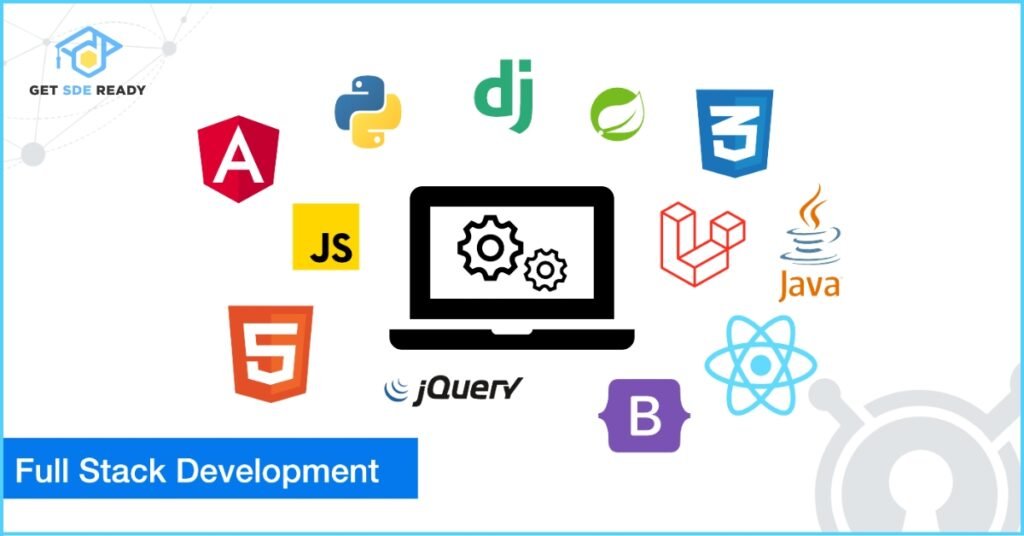
Daily Tasks
A full-stack developer’s day might involve:
- Writing code for a new feature, such as a user login system.
- Debugging issues in the front-end or back-end.
- Collaborating with designers to ensure a seamless user experience.
- Optimizing database queries for faster performance.
- Deploying updates to a cloud server using CI/CD pipelines.
For example, a full-stack developer might build an e-commerce platform, designing the product catalog interface, implementing payment processing, connecting it to a database for order tracking, and deploying the application on AWS.
Skills Required
|
Category |
Skills |
|
Front-end |
HTML, CSS, JavaScript, React, Angular, Vue.js |
|
Back-end |
Python, Node.js, Java, Ruby, PHP, Django, Flask, Express.js |
|
Databases |
MySQL, PostgreSQL, MongoDB |
|
Tools |
Git, Docker, Kubernetes, AWS, REST APIs |
Career Opportunities
Full-stack developers are highly sought after, particularly in startups and mid-sized companies where versatility is key. Roles include:
- Full-Stack Developer
- Software Engineer
- Web Developer
- UI/UX Developer
According to Glassdoor, the average salary for a full-stack developer in the US is around $90,000, with top earners exceeding $130,000 annually. In India, salaries range from INR 7 to 20 LPA (Lakhs Per Annum) based on experience and location.
Pros and Cons
- Pros:
- High demand, especially in startups and agile teams.
- Ability to work on diverse projects, from UI design to server optimization.
- Offers creative freedom to build end-to-end solutions.
- Cons:
- Requires learning and staying updated with multiple technologies.
- Can be overwhelming due to the breadth of skills needed.
To start your full-stack journey, explore resources like the Web Development Course for hands-on learning.
What is Data Structures and Algorithms (DSA)?
Data Structures and Algorithms (DSA) form the backbone of computer science, focusing on organizing data and solving problems efficiently. Mastering DSA equips you with the tools to write optimized code and tackle complex technical challenges.
Key Concepts
- Data Structures: Methods to store and organize data, including arrays, linked lists, stacks, queues, trees, graphs, and hash tables.
- Algorithms: Step-by-step procedures for tasks like sorting (e.g., quicksort, mergesort), searching (e.g., binary search), graph traversal (e.g., BFS, DFS), and dynamic programming.
Importance of DSA
DSA is critical for:
- Code Optimization: Choosing the right data structure or algorithm can reduce time and memory usage, improving application performance.
- Problem-Solving: Enables developers to tackle complex challenges, such as optimizing database queries or designing scalable systems.
- Technical Interviews: Most tech companies, especially FAANG (Facebook, Amazon, Apple, Netflix, Google), test DSA skills in coding interviews.
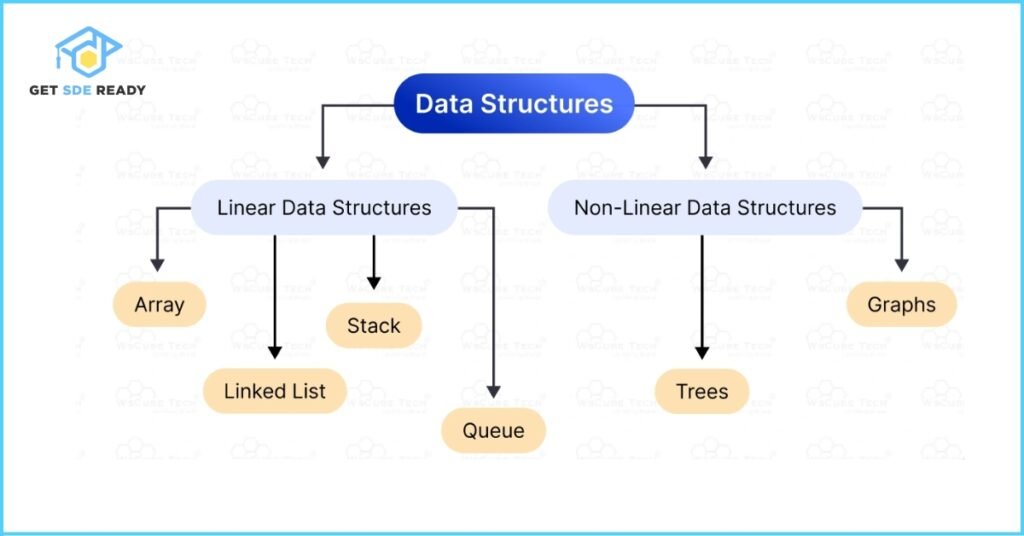
For instance, in a social media platform, graph algorithms can power friend recommendations, while hash tables can optimize user data retrieval.
Skills Required
|
Category |
Skills |
|
Data Structures |
Arrays, Linked Lists, Stacks, Queues, Trees, Graphs, Hash Tables |
|
Algorithms |
Sorting, Searching, Recursion, Dynamic Programming, Graph Algorithms |
|
Tools |
Coding platforms (LeetCode, HackerRank), programming languages (Python, Java, C++) |
Career Opportunities
Strong DSA skills open doors to roles like:
- Software Engineer
- Algorithm Engineer
- System Designer
- Competitive Programmer
Salaries for software engineers with strong DSA skills often exceed $100,000 in the US, with top tech companies offering bonuses and stock options. In India, salaries range from INR 6 to 19 LPA for entry-level roles, with experienced professionals earning up to INR 20 LPA or more.
Pros and Cons
- Pros:
- Essential for technical interviews at top tech companies.
- Enhances problem-solving and logical thinking skills.
- Applicable across various domains, from web development to AI.
- Cons:
- Can be theoretical and abstract, requiring significant practice.
- Less immediately applicable to building user-facing applications.
To master DSA, check out the DSA Course for structured learning and practice.
Comparing Full-Stack Development and DSA
While full-stack development and DSA serve different purposes, they intersect in meaningful ways, particularly in back-end development and system optimization.
Overlap Between the Two
- Back-end Optimization: Full-stack developers use DSA to optimize database queries, API responses, and server performance. For example, choosing a hash table over an array can significantly speed up data retrieval.
- System Design: DSA knowledge helps full-stack developers design scalable architectures, such as load-balanced servers or efficient caching systems.
- Problem-Solving: Both require strong problem-solving skills, though DSA focuses on algorithmic challenges, while full-stack development emphasizes practical implementation.
Key Differences
|
Aspect |
Full-Stack Development |
DSA |
|
Focus |
Building complete web applications |
Optimizing code and solving algorithmic problems |
|
Skill Set |
Broad, covering front-end, back-end, databases |
Deep, focusing on data structures and algorithms |
|
Job Roles |
Full-Stack Developer, Web Developer |
Software Engineer, Algorithm Engineer |
|
Learning Curve |
Steep due to multiple technologies |
Steep due to abstract concepts |
|
Interview Focus |
Coding tests, system design, project experience |
Algorithmic problems, coding challenges |
When to Choose Each Path
- Choose Full-Stack Development If:
- You enjoy building user-facing products and seeing immediate results.
- You want to work in startups or companies needing versatile developers.
- You’re interested in both front-end and back-end development.
- Choose DSA If:
- You’re targeting roles at top tech companies like Google or Amazon.
- You enjoy solving complex algorithmic problems.
- You want to specialize in system design or performance optimization.
- Can You Do Both?:
- Absolutely. Many developers combine both skills, using DSA to enhance their full-stack projects. For example, a full-stack developer might use graph algorithms to optimize a recommendation system. A comprehensive program like Master DSA, Web Dev, and System Design can help you achieve this balance.
Industry Trends and Job Market
The tech industry is dynamic, with both full-stack development and DSA skills in high demand, though they cater to different needs.
Full-Stack Development
- Demand: High, especially in startups and mid-sized companies where developers need to handle multiple roles. The U.S. Bureau of Labor Statistics projects a 22% growth for software developers from 2021 to 2031, with full-stack roles being a significant part of this trend (BLS Software Developers).
- Salary: In the US, full-stack developers earn an average of $90,000, with top earners exceeding $130,000 (Glassdoor). In India, salaries range from INR 7 to 20 LPA.
- Future Outlook: The rise of AI, IoT, and blockchain will increase demand for full-stack developers who can integrate these technologies into web applications.
DSA Skills
- Demand: Critical for roles at top tech companies and positions involving system design or algorithm development. DSA is a key component of coding interviews, making it a must-have for competitive roles.
- Salary: Software engineers with strong DSA skills can earn over $100,000 in the US, with top companies offering significant bonuses. In India, salaries range from INR 6 to 19 LPA for entry-level roles, with experienced professionals earning more.
- Future Outlook: As AI and machine learning grow, DSA skills will remain essential for optimizing algorithms and building scalable systems.
Balancing Both
Many companies value candidates who can combine practical development skills with strong DSA knowledge. Startups may prioritize full-stack skills for immediate project contributions, while larger firms emphasize DSA for technical rigor. A balanced skill set can make you a versatile candidate.
Learning Paths
For Full-Stack Development
- Step 1: Front-end Basics:
- Learn HTML, CSS, and JavaScript.
- Build simple websites to practice.
- Explore frameworks like React or Vue.js.
- Step 2: Back-end Development:
- Choose a language (e.g., Python, Node.js).
- Learn a framework (e.g., Django, Express.js).
- Understand REST APIs and server-side logic.
- Step 3: Databases:
- Study SQL (MySQL, PostgreSQL) and NoSQL (MongoDB).
- Practice designing database schemas.
- Step 4: Deployment:
- Learn cloud platforms (AWS, Heroku).
- Understand CI/CD pipelines and DevOps tools.
- Resources:
- Web Development Course
- FreeCodeCamp, Udemy, Codecademy
- Build projects like a portfolio website or a to-do app.
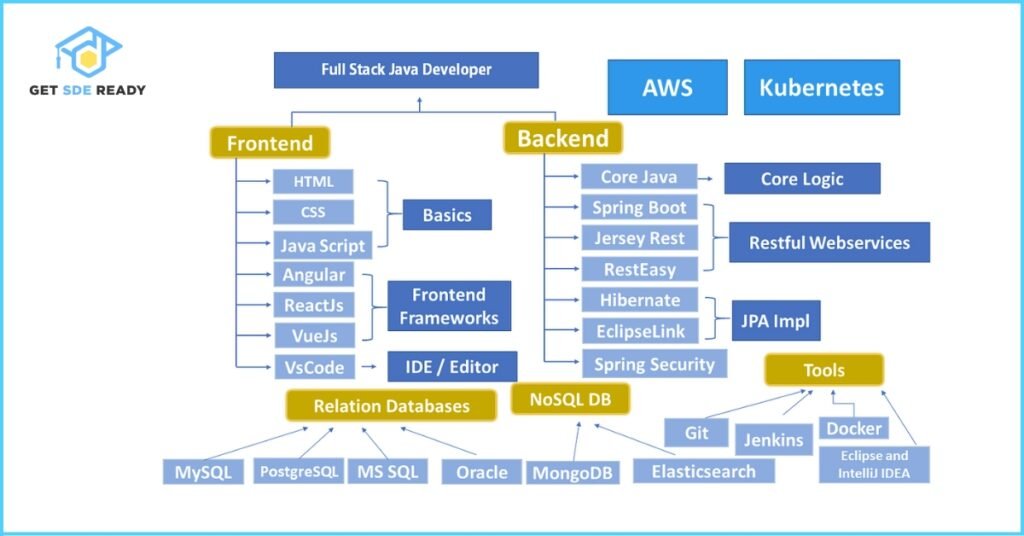
For DSA
- Step 1: Basics:
- Learn fundamental data structures (arrays, linked lists, stacks).
- Study basic algorithms (sorting, searching).
- Step 2: Intermediate Concepts:
- Explore trees, graphs, and hash tables.
- Practice recursion and dynamic programming.
- Step 3: Advanced Topics:
- Master graph algorithms (BFS, DFS) and advanced techniques.
- Solve complex problems on platforms like LeetCode.
- Step 4: Practice:
- Use platforms like LeetCode, HackerRank, or CodeSignal.
- Participate in coding competitions or mock interviews.
- Resources:
- DSA Course
- Books: Cracking the Coding Interview by Gayle Laakmann McDowell, Introduction to Algorithms by Cormen
- GeeksforGeeks, Coursera
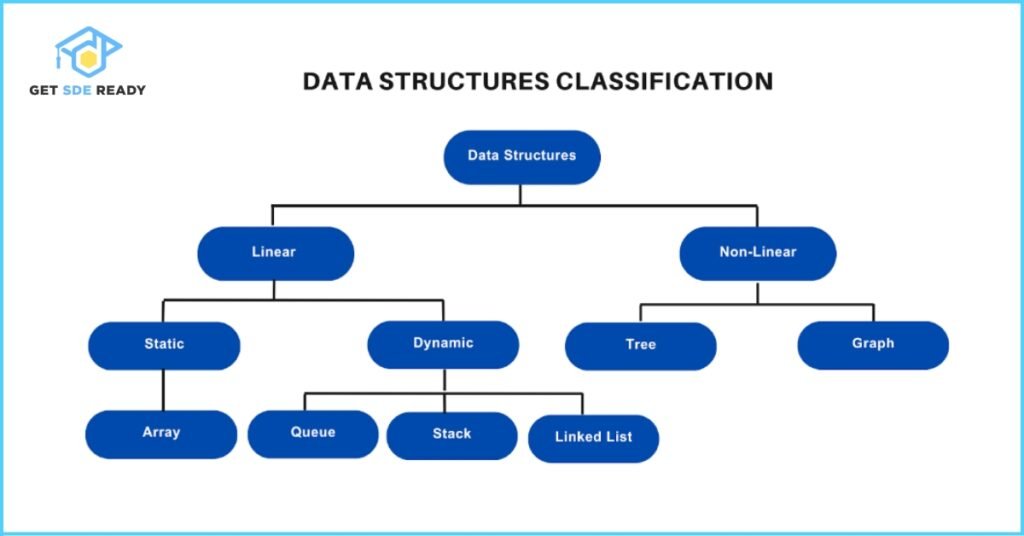
-
For a comprehensive approach, consider the Crash Course for a quick start or the Master DSA, Web Dev, and System Design for an all-in-one solution.
Alternative Path: Data Science
If you’re interested in data analysis and machine learning, DSA is also a critical skill for data scientists. Explore the Data Science Course to see how DSA applies to data-driven roles.
Conclusion
Choosing between full-stack development and DSA depends on your interests and career aspirations. Full-stack development is ideal if you love building user-facing applications and working on diverse projects. DSA is perfect if you enjoy solving complex problems and aim for roles at top tech companies. The best approach? Combine both to become a versatile developer who can build and optimize applications effectively.
Start your journey today with our free courses and stay ahead in the tech world. Sign up now.
FAQs
Do I need to know DSA to be a full-stack developer?
While not always critical for front-end tasks, DSA is essential for back-end development and optimizing code performance. It’s highly recommended for a well-rounded skill set.
Can I get a job without knowing DSA?
It’s unlikely for software engineering roles, as most companies test DSA skills in interviews. Even for full-stack roles, basic DSA knowledge is beneficial.
Which pays more, full-stack development or DSA-focused roles?
Both offer high-paying opportunities, but DSA-focused roles at top tech companies often come with higher salaries and bonuses, depending on location and experience.
How long does it take to learn full-stack development?
With dedicated effort, basic proficiency can be achieved in 3-6 months. Mastery requires ongoing learning and project experience.
Is DSA more important than practical development skills?
Both are crucial. DSA helps you pass interviews and solve complex problems, while practical skills enable you to build and maintain applications.
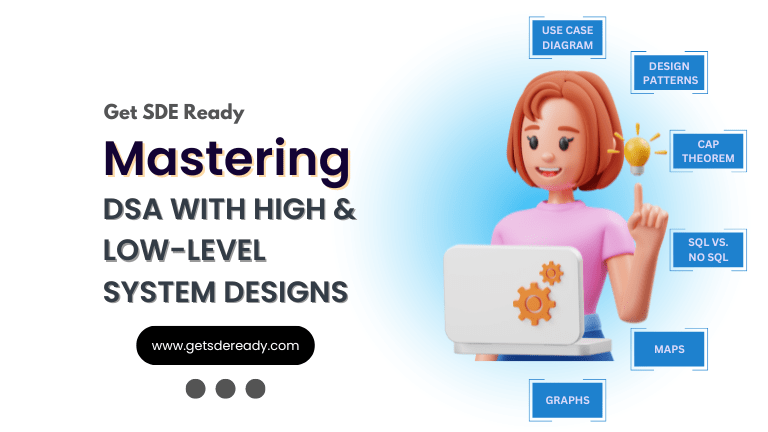
DSA, High & Low Level System Designs
- 85+ Live Classes & Recordings
- 24*7 Live Doubt Support
- 400+ DSA Practice Questions
- Comprehensive Notes
- HackerRank Tests & Quizzes
- Topic-wise Quizzes
- Case Studies
- Access to Global Peer Community
Buy for 60% OFF
₹25,000.00 ₹9,999.00
Accelerate your Path to a Product based Career
Boost your career or get hired at top product-based companies by joining our expertly crafted courses. Gain practical skills and real-world knowledge to help you succeed.
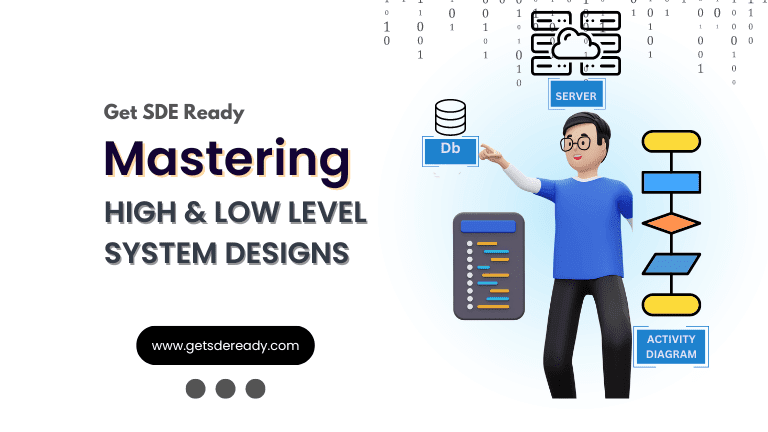
Low & High Level System Design
- 20+ Live Classes & Recordings
- 24*7 Live Doubt Support
- Case Studies
- Comprehensive Notes
- HackerRank Tests
- Topic-wise Quizzes
- Access to Global Peer Community
- Interview Prep Material
Buy for 65% OFF
₹20,000.00 ₹6,999.00
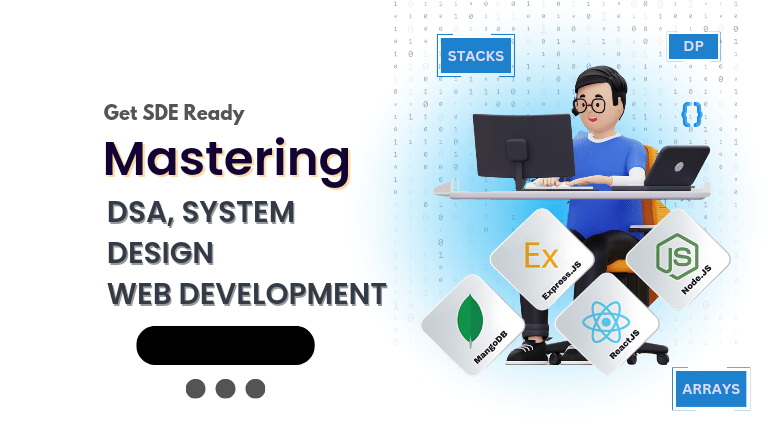
Fast-Track to Full Spectrum Software Engineering
- 120+ Live Classes & Recordings
- 24*7 Live Doubt Support
- 400+ DSA Practice Questions
- Comprehensive Notes
- HackerRank Tests & Quizzes
- 12+ live Projects & Deployments
- Case Studies
- Access to Global Peer Community
Buy for 57% OFF
₹35,000.00 ₹14,999.00

DSA, High & Low Level System Designs
- 85+ Live Classes & Recordings
- 24*7 Live Doubt Support
- 400+ DSA Practice Questions
- Comprehensive Notes
- HackerRank Tests & Quizzes
- Topic-wise Quizzes
- Case Studies
- Access to Global Peer Community
Buy for 60% OFF
₹25,000.00 ₹9,999.00
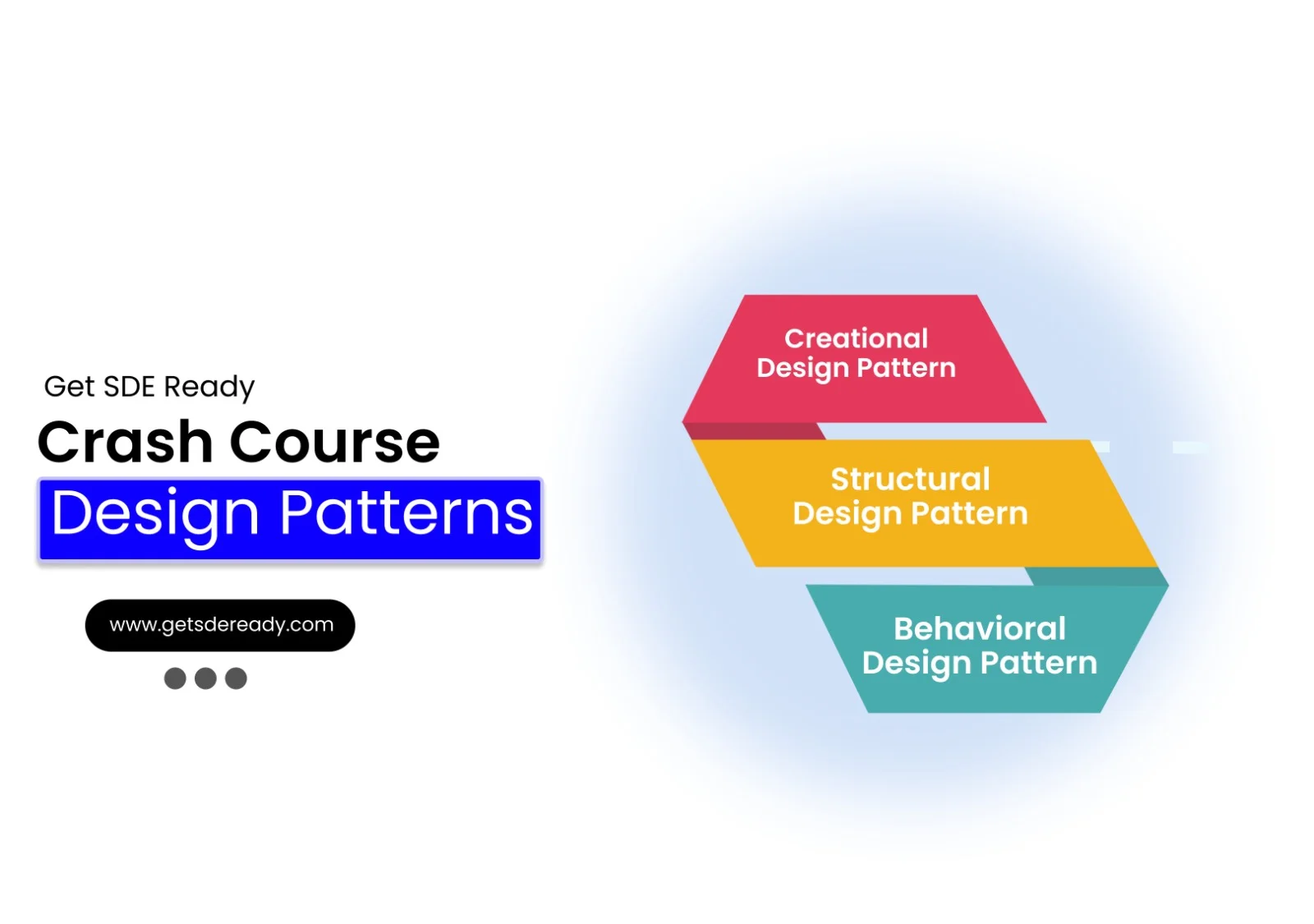
Design Patterns Bootcamp
- Live Classes & Recordings
- 24/7 Live Doubt Support
- Practice Questions
- Case Studies
- Access to Global Peer Community
- Topic wise Quizzes
- Referrals
- Certificate of Completion
Buy for 50% OFF
₹2,000.00 ₹999.00
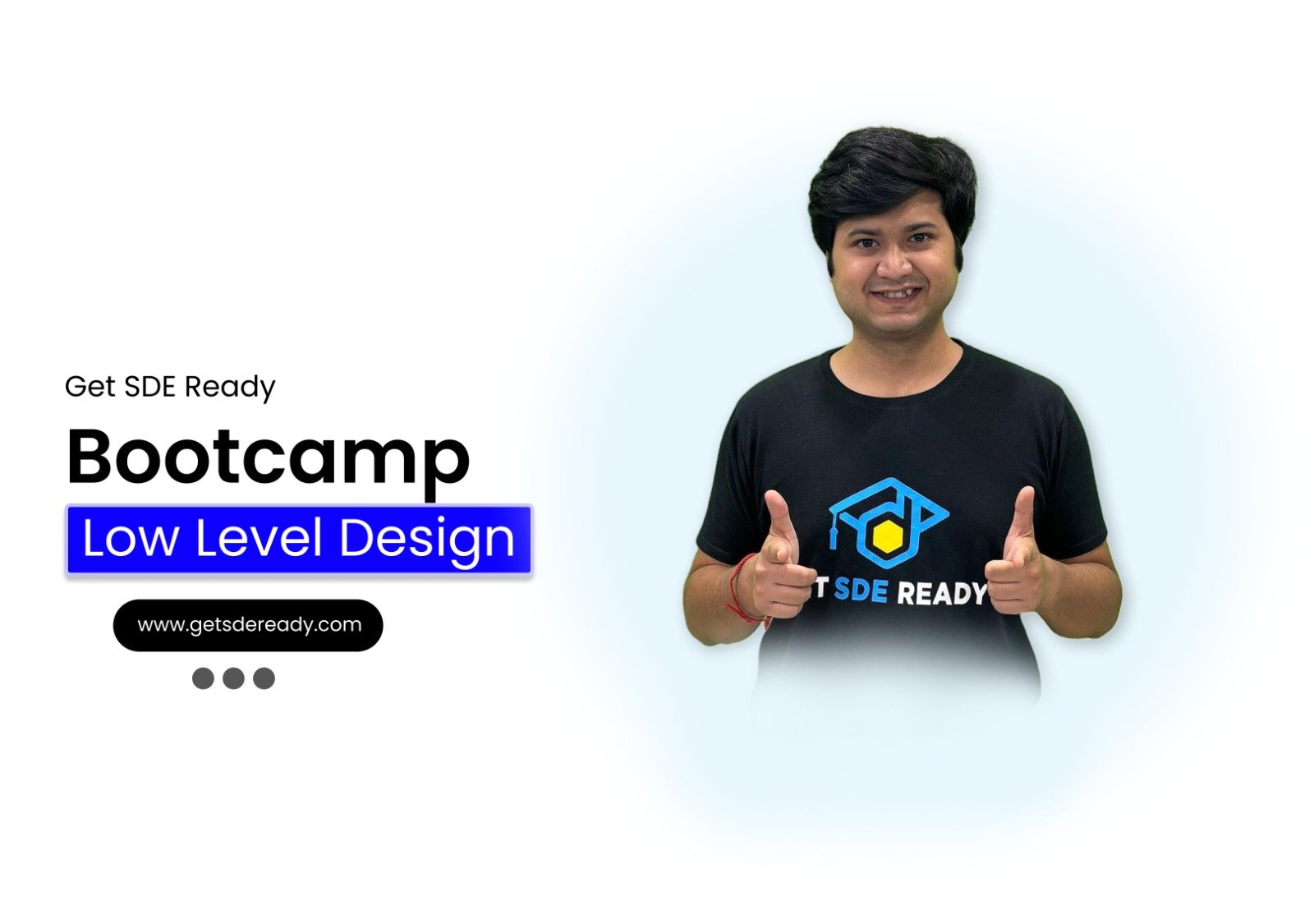
LLD Bootcamp
- 7+ Live Classes & Recordings
- Practice Questions
- 24/7 Live Doubt Support
- Case Studies
- Topic wise Quizzes
- Access to Global Peer Community
- Certificate of Completion
- Referrals
Buy for 50% OFF
₹2,000.00 ₹999.00
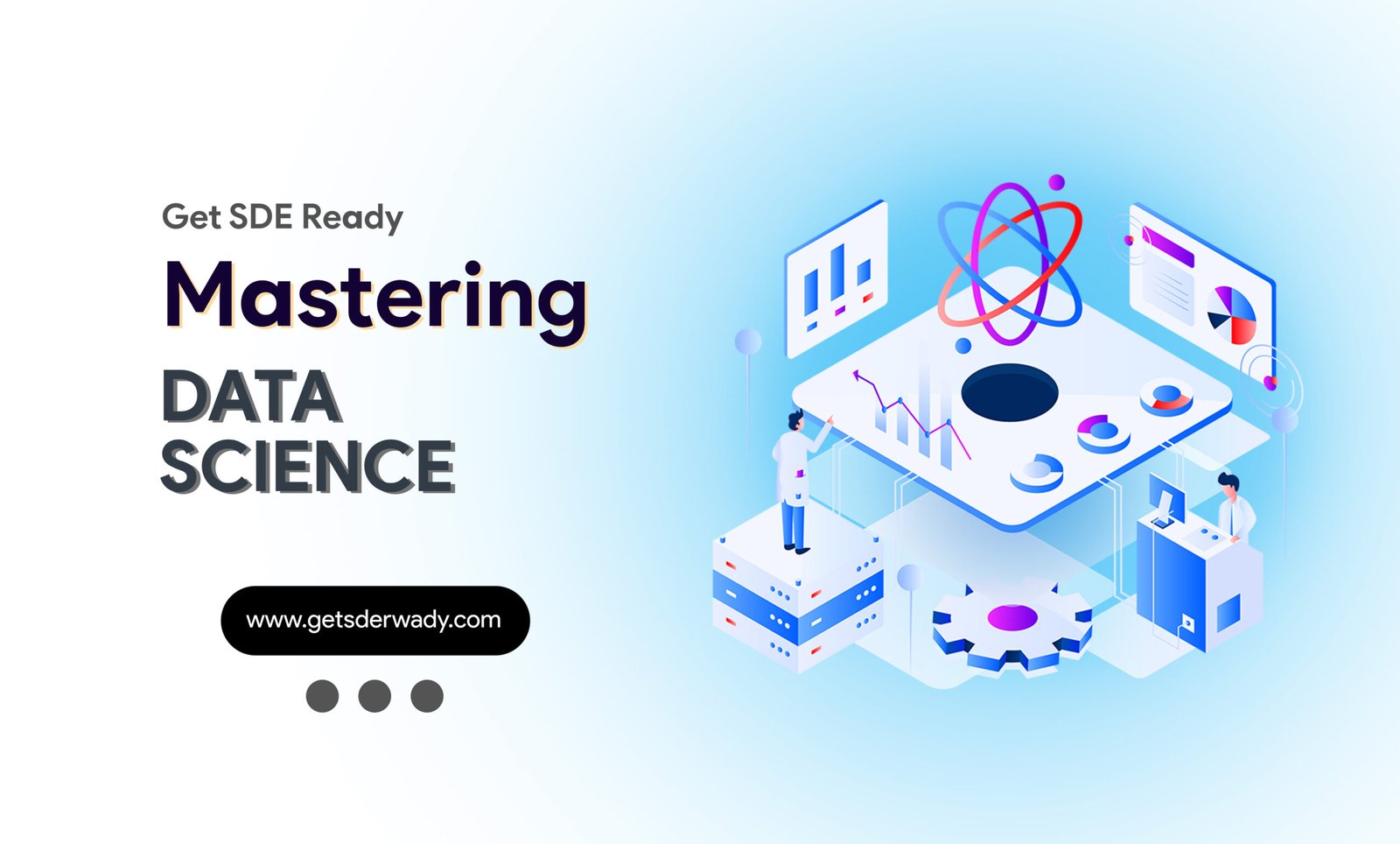
Essentials of Machine Learning and Artificial Intelligence
- 65+ Live Classes & Recordings
- 24*7 Live Doubt Support
- 22+ Hands-on Live Projects & Deployments
- Comprehensive Notes
- Topic-wise Quizzes
- Case Studies
- Access to Global Peer Community
- Interview Prep Material
Buy for 65% OFF
₹20,000.00 ₹6,999.00
Reach Out Now
If you have any queries, please fill out this form. We will surely reach out to you.
Contact Email
Reach us at the following email address.
arun@getsdeready.com
Phone Number
You can reach us by phone as well.
+91-97737 28034
Our Location
Rohini, Sector-3, Delhi-110085